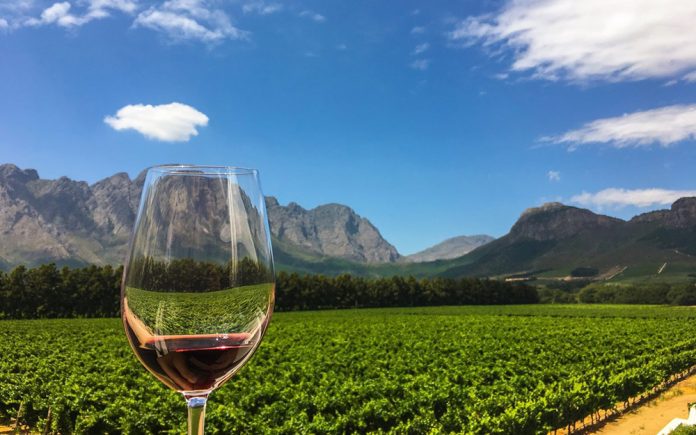
By Rick Riozza
As we are typically experiencing, the desert winter here in the valley quickly springs into summer-type weather, and thus, avoiding any prolonged spring—if you will.
And because our climate is so sunny, we enthusiasts—almost out of necessity, but more-so out of love, cherish our Sauvignon Blancs because they are so refreshing and lively. The wines are such a savvy pick for the season as they pair wonderfully with the light cuisine of our valley. So much so, that we’ve coined an affectionate term for this wine: Enter now the savvy blancs.
Our coverage of the savvy blancs these past ten years in this column has been extensive—as they should be. I know there’s a group of Pinot Grigio lovers out there, but our valley shops for the savvy blancs as much as they do for the charming Chardonnay, which is the largest selling varietal in the state—but not so much out here in the desert.
We know of the zippy Sauv Blancs from kiwi-land; we know the subtle ones from the Loire Valley in France; and we cherish California’s savvy blancs that round things out and show a bit more of the tropical flavors.
But how many of us realize the wealth of reasonably priced Sauv Blanc from South Africa. Most enthusiasts haven’t spent the time trying them. And it’s too bad because the wines are absolutely delicious. And they quite often fit the demand for the savvy blanc person who likes a “middle-of-the-road” quaff. It’s been said that the South African Sauv Blanc is indeed the culinary center between the New Zealand zest and the softer Sancerre. South African is as vibrant as kiwi-land but more pungent and aromatic than French.
Okay—as one would expect, let’s do a little wine appreciation didactic. Wine emeritus, Hugh Johnson has stated, “There are many contestants in the world’s vineyard beauty contest, but South Africa is always in the finals. Blue-shadowed stacks of Table Mountain sandstone and decomposed granite rise from vivid green pastures dotted with the brilliant white façades of 300-year-old Cape Dutch homesteads.”
In other words, the expansive scenery is so beautiful, that you just know the wines from those vineyards have to produce some tasty vino!
Grapes were first planted at the Cape of Good Hope (now in South Africa) in the mid-1600s. It provided wine for sailors of the Dutch East India Company on the month’s long voyage from Europe to the highly valued Spice Islands of what is now Indonesia. The Cape was a midway point, just as the style of the savvy blanc is midway between Europe and the New World.
The Cape boasts the oldest geology in the wine-growing world: ancient, weathered soils, typically based on either granite, sandstone, or shale, which naturally curtail the vigor of the vine—meaning more intense flavors in the grape. Most South African vines thrive in an almost perfect Mediterranean climate, cooler than their latitudes suggest, thanks to the cold current from Antarctica that washes on the south-west Atlantic coast.
Quite interesting to note: most climatologists predict that of all of the New World wine producers, South Africa is least likely to be seriously affected by climate change. Looks like this region will become more and more known and appreciated in the coming decades. Cheers to that!
All right—as we always write, it’s better to enjoy a cheeseburger than to read about it. We importune you readers to contact your favorite wine shop and have them stock some savvy blanc for your pleasure: Here are three wonderful South African Sauvignon Blancs to seek after:
2021 Southern Right Sauvignon Blanc ($17). The PR on the wine states: “Founded by the family of Hamilton Russell Vineyards with the aim of creating serious, age-worthy wines that combine distinct South African fruit and flavor with classic styling and refinement. The winery is named after the rare Southern Right whales that frequent Walker Bay, and each bottle sold makes a contribution to their conservation.”
The Hamilton Russell vineyards are one of the most popular wines of the region and are a great example of the area’s craft. Their wines are perfect for our desert desires: low alcohol and a perfect balance of citrus, easy grass, grapefruit, green apples, herbs, lemon & lime, and stone fruit. And the minerality is just right!
 2020 Rustenberg Stellenbosch Sauvignon Blanc ($13). For those of you who like to collect wine labels, the label of the Rustenberg is one you’ll want: Classic “old world” Dutch-looking label. Anyway—the real joy is the classically styled wine that shows structure, complexity, and elegance. It’s a sexy savvy blanc, so reasonably priced, for your patio parties and dining.
2020 Rustenberg Stellenbosch Sauvignon Blanc ($13). For those of you who like to collect wine labels, the label of the Rustenberg is one you’ll want: Classic “old world” Dutch-looking label. Anyway—the real joy is the classically styled wine that shows structure, complexity, and elegance. It’s a sexy savvy blanc, so reasonably priced, for your patio parties and dining.
The winery commentary hits the spot: “The intrinsic Sauvignon Blanc characteristics of tropical fruits, melon and gooseberry, with underlying tones of pineapple and passion fruit sustained on a fresh, crisp and well-balanced palate with prodigious length.”
2021 Lomond Cape Algulhas Sauvignon Blanc ($17). A delicious bright and vibrant wine. The aroma shows white fruit, hints of kiwi fruit, and minerality. The palate has layers of fruit that gives the wine great complexity and dimension. Not just a one-note or three-note Sauv blanc, but probably ten notes of classic savvy characteristics. The fresh acidity gives the wine a liveliness that makes it great for any occasion.
And a final note: Congratulations to CV Weekly Publisher Tracy Dietlin and her team for a decade of the best coverage of the valley!! It’s been my pleasure to act as your Vino Voice. In Vino Veritas! Cheers to you all!










































